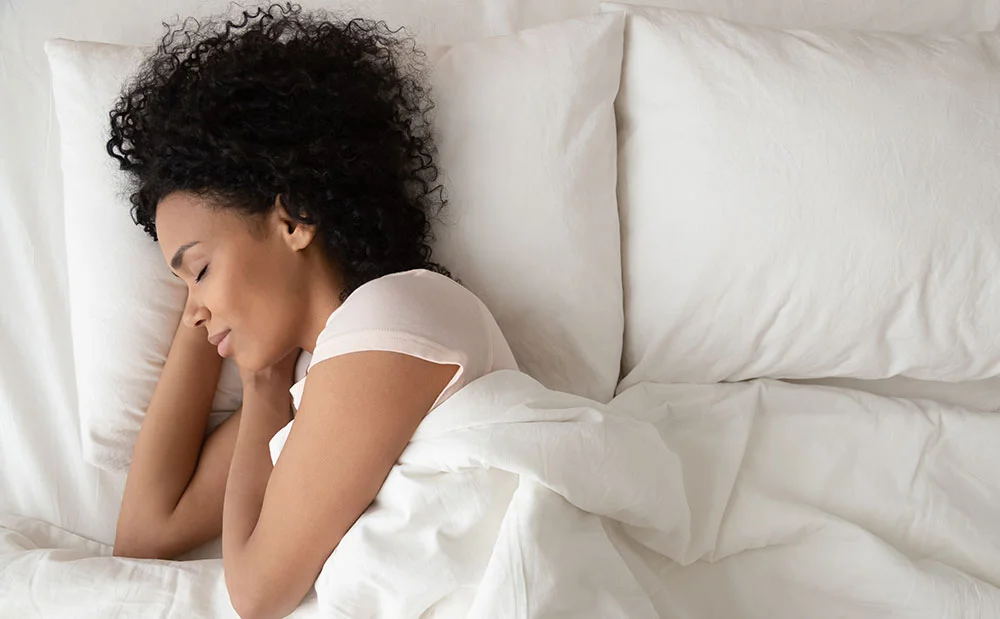
TikTok is filled with many questionable hacks for all aspects of your life, especially sleep. However, every once in a while, something comes around that looks like it is actually going to help improve your quality of sleep.
Enter Maggie Perkins’s (@itsmaggieperkins) hack for the “best sleep you’ll ever get”. Perkins claims that building a “vagus support cocoon” before going to sleep each night can greatly improve your quality of sleep. The caption of the video reads, “Y’all need to regulate your vagus nerve and support yourself for quality sleep”.
Read on to find out how to build your own sleep cocoon, what your vagus nerve even is, and whether or not the hack actually helps you get better sleep.
How to Build Your Sleep Cocoon
According to Perkins’s TikTok, all you need are five pillows and two thick, heavy blankets. Perkins demonstrates her sleep cocoon while she’s on a work trip, using hotel pillows and comforters.
To create the cocoon, you will place two pillows at the “top” of the cocoon to support your neck, one pillow underneath each of your arms and one pillow underneath your legs. The cocoon does encourage you to sleep on your back, which is a sleeping position that offers the most support for your spine.
You’ll also want to pull two thick duvets or comforters on top of yourself, perhaps even using a weighted blanket if you have one. Though Perkins doesn’t necessarily recommend it, making sure you’re sleeping in a cool room could be a nice addition to your cocoon set up, and even improve your quality of sleep.
What Is Your Vagus Nerve?
Your vagus nerve, or the vagal nerves, is the main nerve of your parasympathetic nervous system. Essentially, these nerves control a majority of your involuntary body functions, and can regulate important functions for sleep like digestion, heart rate and muscle sensations. (1)
Regulating your vagus nerve can help you get a higher quality of sleep because once your vagus nerve and your parasympathetic nervous system more broadly is calmed, your body is able to shift out of a more awake state, and shift into a calmer state that is more primed for sleep.
So, Does the Cocoon Work?
I am a side-sleeper, who notoriously struggles to sleep on my back, so I was a bit skeptical about trying this sleep hack. I might feel supported, but that still doesn’t mean I am going to be able to fall asleep.
One thing I really did enjoy about the cocoon was the feeling of coziness that it brought before I went to fall asleep, and it was fun to be wrapped up in my own little pillow fort. I also enjoyed the feeling of my knees being supported by a pillow, both my legs and my back felt much better than they usually do when I sleep on my side.
Now, I can’t speak to any scientific validity of this hack. Unfortunately, I have no way to really measure the effect on my vagus nerve. However, I found that I prefer a more free sleep space, where I can spread out my limbs and adjust my sleeping position without sending pillows flying.
I think the sleep cocoon is a great thing to try, especially since it combines a lot of elements that are conducive to a good night’s sleep, and creating your own pillow cocoon can be a pretty fun way to get yourself ready for bed.
Sources
- Vagus nerve. Cleveland Clinic. Updated January, 11, 2022 Accessed June 26, 2024. https://my.clevelandclinic.org/health/body/22279-vagus-nerve


























